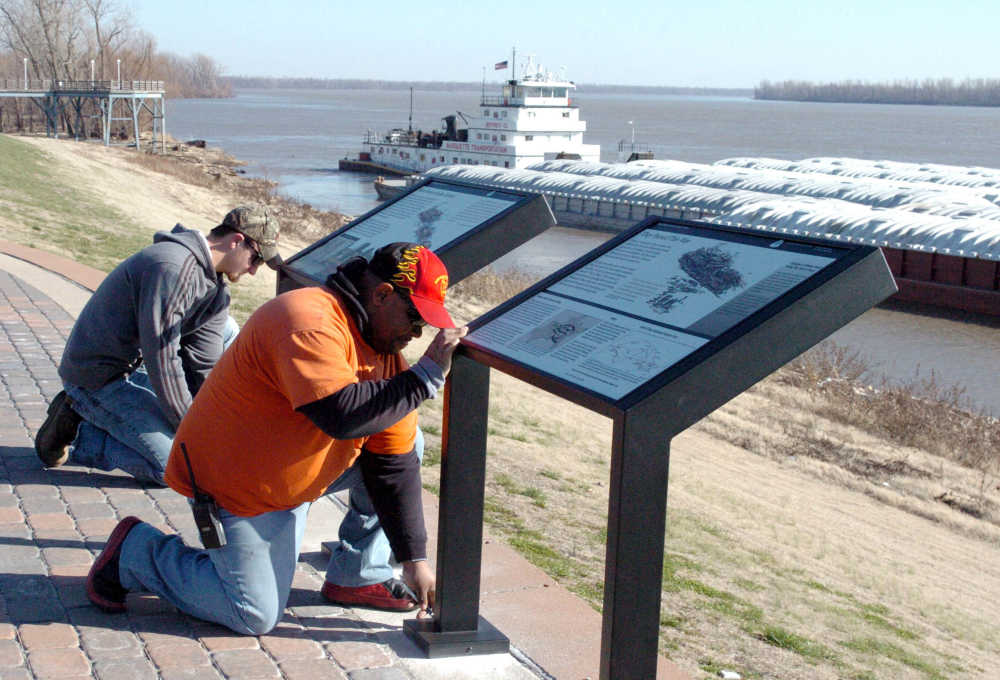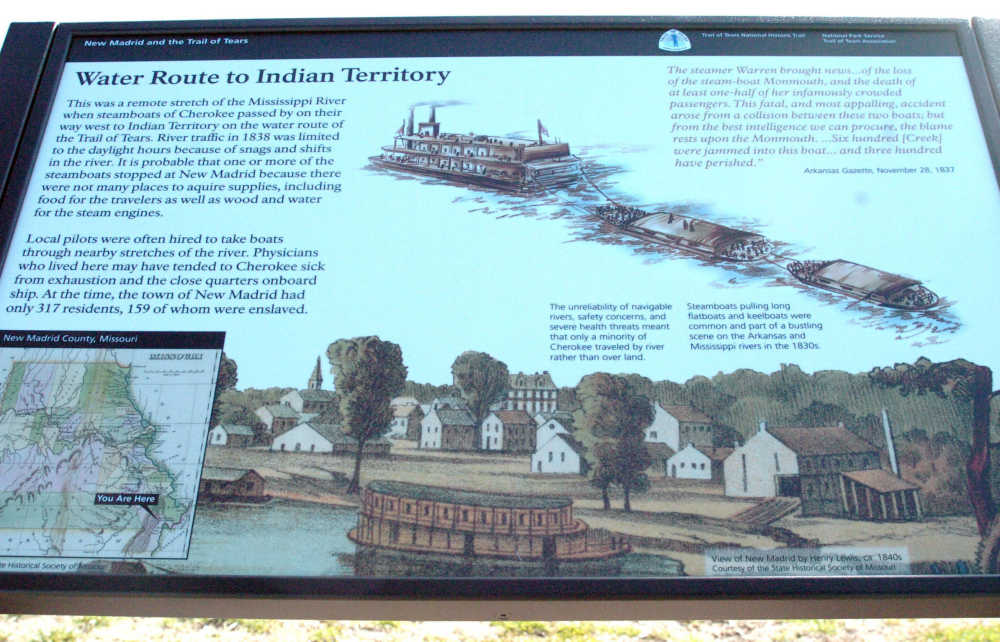Signs of the times

New signs mark Trail of Tears' water route
"I have no more land. I am driven away from home, driven up the red waters, let us all go, let us all die together and somewhere upon the banks we will be there." -- Sin-e-cha's Song, heard on removal boats along the Trail of Tears
NEW MADRID - On a day in 1838, the residents of New Madrid may have heard those words drifting up from the waters of the Mississippi River. As the steamboat made its way down river it pulled long flatboats filled with members of the Cherokee Indian tribes, lamenting their eviction from their homelands and relocation to a new, strange territory.
Due to the hazards of river travel, crowded conditions aboard the boats and the rapid spread of diseases, many of the Indians on board died. Their travels - both by river and later by land - became known as the Trail of Tears.

For the complete article and more stories from the Standard Democrat, click here to log on to the electronic edition.

